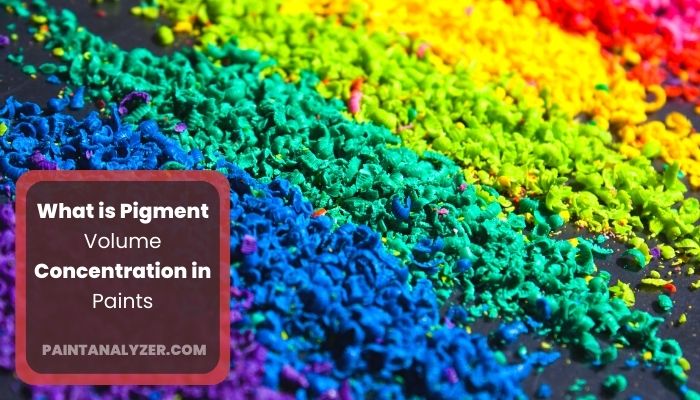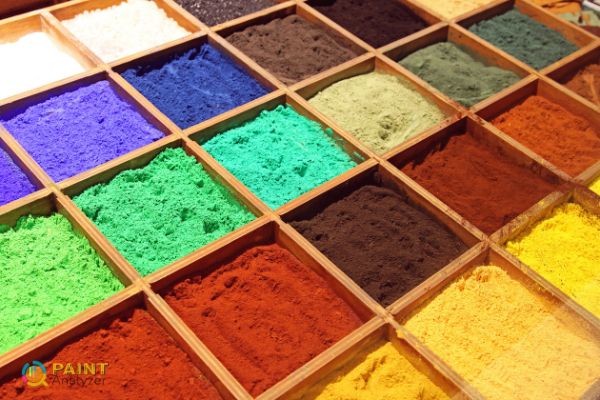The PVC, or Paint Volume Concentration, is an important parameter in determining the opacity of paint. A high PVC paint will have a high opacity and will be more resistant to fading. The PVC is also important in determining the coverage of paint, as a high PVC paint will have higher coverage than a low PVC paint.
Pigment volume concentration (PVC) is a measure of the concentration of pigment in paint. It is expressed as a percentage of the volume of the paint that is occupied by the pigment. The PVC is an important factor in paint formulations and can affect the hiding power, color, gloss, and other properties of the paint.

What Does Pigment Volume Concentration in Paints Mean?
Pigment volume concentration (PVC) is a measure of the amount of pigment in paint, expressed as a percentage by volume. It is an important factor in determining the opacity and tinting strength of paint and can be used to calculate the ideal ratio of pigment to binder for a given application. PVC is also a useful tool for quality control, as it can be used to monitor changes in the composition of paint over time.
Pigment volume concentration (PVC) is a measurement of the amount of pigment in paint. It is typically expressed as a percentage by weight or by volume. For example, a PVC of 20% means that 20% of the paint’s weight is made up of pigment.
PVC is an important factor in determining the opacity and coverage of paint. In general, the higher the PVC, the opaquer and coverage the paint will be. However, there are other factors that affect these properties as well, such as the type and size of pigment particles.
Some pigments are more expensive than others, so manufacturers may use lower-cost pigments to keep costs down while still achieving desired levels of opacity and coverage. This can be done by using smaller particle sizes or by using mixtures of different types of pigments.
Why Is Pigment Volume Concentration Important?

There are many reasons that make pigment volume concentration really important. PVC in the paint can indicate many factors that you may want to know.
Parameter in Manufacturing
Pigment volume concentration (PVC) is an important parameter in the manufacture of paint, inks, and other colorant-containing products.
Characteristics of Paint
It determines the hiding power, tinting strength, and color of a paint or coating, which means high PVC will result in a more opaque, darker paint or coating, while a low PVC will produce a more translucent, lighter paint or coating.
Amount of Pigment
It is a measure of the quantity of pigment present in a given volume of colorant and is typically expressed as a percentage.
Concentration
A higher PVC means a higher concentration of pigment, which can lead to more intense colors and better coverage.
Viscosity
PVC also affects the viscosity of the colorant and can be used to adjust the flow properties of the final product.
Ratio
It is a ratio of the volume of pigment to the total volume of the paint or coating and is expressed as a percentage.
Durability
The PVC also affects the durability of a paint or coating, with a higher PVC providing greater wear resistance.
Price
PVC also affects the price of the colorant. High PVC colorants are typically more expensive than Low PVC colors.
How Does Pigmentation in Paint Work?
Pigmentation in paint is the process of adding color to a painting. The pigment is a dry powder that is mixed with a binder, such as oil or water, to create a pigment paste. The paste is then added to the paint base and mixed until it reaches the desired color.
Pigments can be made from a wide variety of materials, including minerals, plants, and even insects. The most commonly used pigments are made from titanium dioxide, iron oxide, and carbon black. These pigments are able to produce a wide range of colors, including white, black, brown, red, orange, yellow, green, blue, and purple.
In addition to providing color to paintings, pigments can also add texture and depth. For example, by adding different types of pigments to a painting, you can create an effect known as impasto, where the paint appears thicker and more textured. If you are interested in experimenting with pigmentation in your paintings, then there are many ways to do so.
You can buy commercially available pigment pastes or make your own at home using natural materials like fruits and vegetables. There really is no limit to what you can create, so have fun exploring!

Credit: dispersetech
How Can You Calculate PVC in Paint?
The pigment volume concentration (PVC) is a measure of the amount of pigment present in a paint or coating. It is usually expressed as a percentage by volume or by weight. The PVC can be calculated using a simple formula:
PVC = (Pigment weight / Total paint weight) × 100
For example, if a paint sample weighs 500 grams and the pigment content is 10%, the PVC would be calculated as follows:
PVC = (10 / 500) × 100 = 2%
The PVC is an important factor in determining the opacity and chroma of a paint or coating. In general, the higher the PVC, the opaquer, and the more vibrant the color will be.
What Is The Process of Finding the Density of Pigment?
Knowing the density of pigment may help you in many ways. The process of finding the density of pigment is discussed here step by step:
Step One: Start the process by using the right equipment
When finding the density of a pigment, you will need to use a graduated cylinder which is filled with water. You will then add the pigment to the water and stir it until it is fully dissolved. Once this is done, you can record the new volume of the solution and divide it by the weight of the pigment. This will give you your answer in g/mL.
To find the weight of the pigment, you can use a balance scale. Place the empty container that you will be using on the scale and tare or zero it out. This ensures that only the weight of the pigment is being measured and not that of the container.
Step Two: Put an adequate amount of pigmentation
Add your desired amount of pigment to the container until you have reached your target weight, then note this number down. For example, let’s say we wanted to find out how dense our blue paint was. We would fill our 100 mL graduated cylinder about halfway with water and stir until all bubbles were gone.
Then add 5 grams of blue paint to an empty container on our balance scale and tare it again so that only the weight of the paint is being measured.
Step Three: Mix the solvent with the proper measurement
Once we had added all 5 grams of paint into our graduated cylinder containing water, we could stir until it was completely dissolved and record the new volume (which should now be 100 mL+5 mL=105 mL).
To calculate density, we take 105 mL and divide it by 5g, which gives us 21g/mL (or 2140 kg/m3). This is how you would go about finding the density of pigment!
How Does Pigment Volume Concentration Affect the Use of Floetrol in Latex Paint?
Pigment volume concentration influences the effectiveness of using Floetrol with latex paint. Higher PVC can hinder Floetrol’s ability to improve flow and leveling, leading to a thicker and more challenging application. Adjusting the Floetrol ratio based on the PVC can optimize the paint’s performance and achieve the desired finish.
Calculating PVC (Pigment Volume Concentration) of Paint
How Can You Calculate Pigment Binder Ratio?
Pigment binder ratio calculation is a method used to determine the optimum ratio of pigment to binder for a given paint formulation. The calculation is based on the desired physical and optical properties of the finished paint and takes into account the relative costs of the pigment and binder components.
The process of pigment binder ratio calculation is to determine the desired properties of the finished paint. These can be divided into two main categories: physical properties and optical properties. Physical properties include things like durability, adhesion, flexibility, etc. Optical properties include things like color, gloss, transparency, etc.
Conclusion
Pigment volume concentration (PVC) is a color characteristic that is expressed as a percentage by volume. PVC is a measurement that uses the atmospheric or light reflectance of a paint. Paint with a higher PVC will have a lower light reflectance, so it will appear darker.
Whereas paint with a lower PVC will have a higher light reflectance so it will appear lighter. Pigment volume concentration (PVC) is a secondary character that is used to describe the amount of pigment in paint. PVC is determined by dividing the pigment mass concentration (A) by the pigment volume (V).